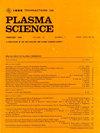A Machine Learning Predictor for Vertical Displacement Events on EAST
IF 1.3
4区 物理与天体物理
Q3 PHYSICS, FLUIDS & PLASMAS
引用次数: 0
Abstract
To obtain higher discharge parameters in experimental advanced superconducting tokamak (EAST) experiments, an elongated plasma configuration is applied. As a result, vertical displacement events (VDEs) are easy to occur, especially for plasma with high vertical instability growth rate. Studying the prediction and avoidance of VDEs is of great importance for the protection of the plasma-facing and structural components of EAST tokamak. Data-driven methods based on supervised learning are widely used in disruption prediction. Labels as the key of the supervised learning are difficult to accurately divide. In this article, we first propose a labeling method based on the Jensen-Shannon (JS) divergence, enabling a specific analysis and evaluating the precursor onset time for each discharge. By comparing prediction accuracy and warning time prior to disruption using different algorithms with dataset collected from EAST experiment of 2021–2023, it is found that random forest (RF) model works best and achieves a success VDE alarm rate of 99.2% with a false alarm rate of 2.1% for nondisruptive discharges. The results show that models trained with dataset collected with class split point found by the JS divergence method from each discharge outperforms models trained with the dataset collected from each discharge with class split point of fixed time before disruption.求助全文
约1分钟内获得全文
求助全文
来源期刊

IEEE Transactions on Plasma Science
物理-物理:流体与等离子体
CiteScore
3.00
自引率
20.00%
发文量
538
审稿时长
3.8 months
期刊介绍:
The scope covers all aspects of the theory and application of plasma science. It includes the following areas: magnetohydrodynamics; thermionics and plasma diodes; basic plasma phenomena; gaseous electronics; microwave/plasma interaction; electron, ion, and plasma sources; space plasmas; intense electron and ion beams; laser-plasma interactions; plasma diagnostics; plasma chemistry and processing; solid-state plasmas; plasma heating; plasma for controlled fusion research; high energy density plasmas; industrial/commercial applications of plasma physics; plasma waves and instabilities; and high power microwave and submillimeter wave generation.
 求助内容:
求助内容: 应助结果提醒方式:
应助结果提醒方式:


